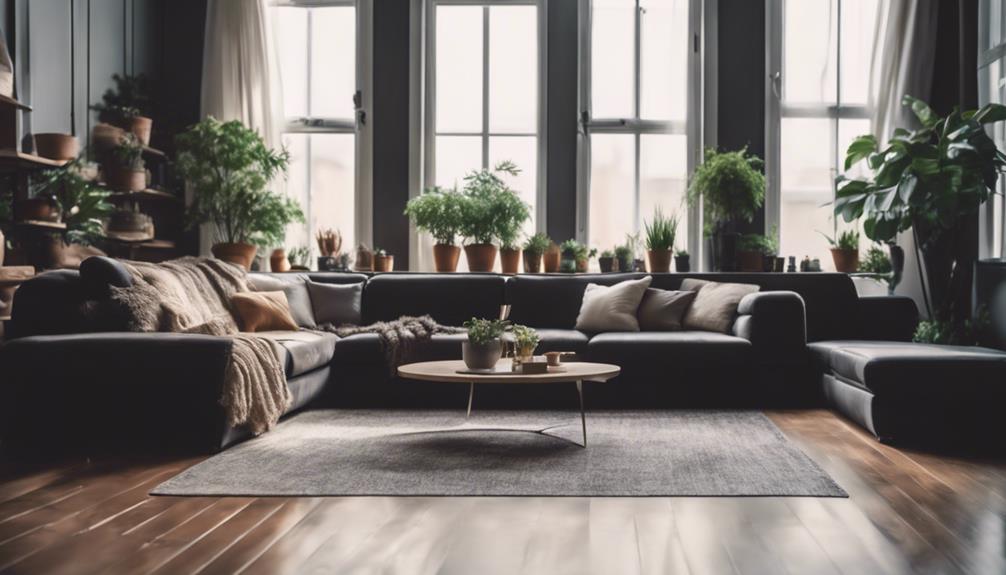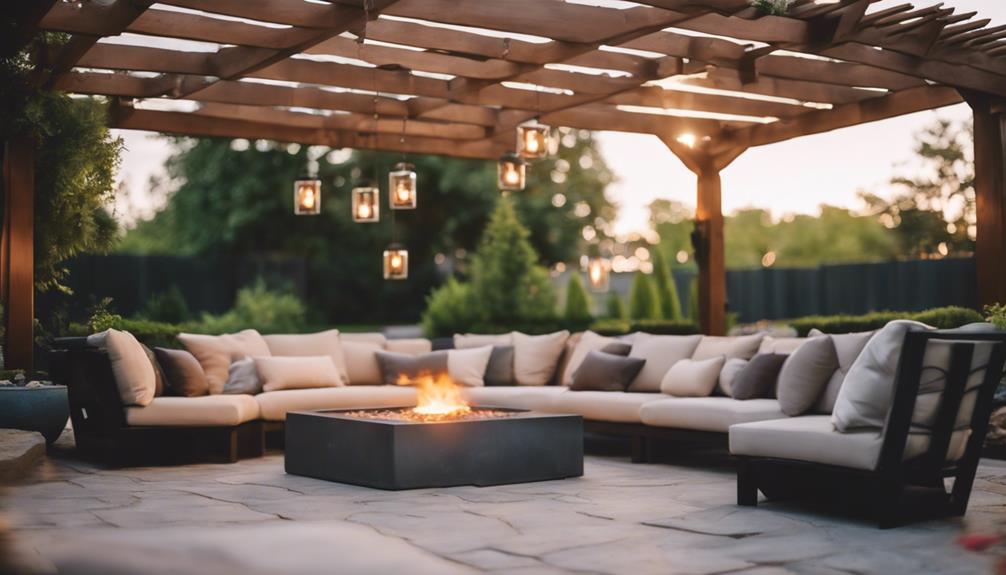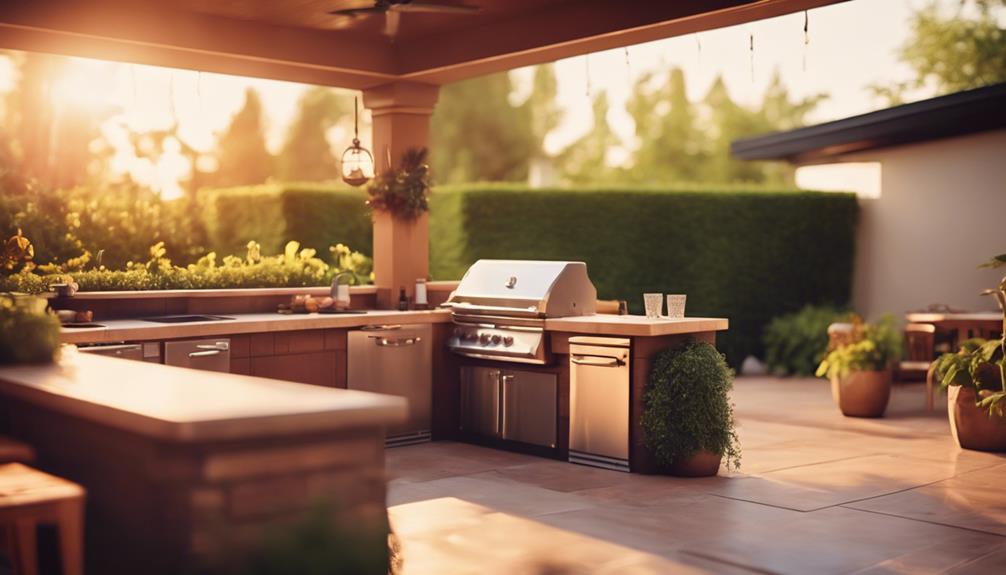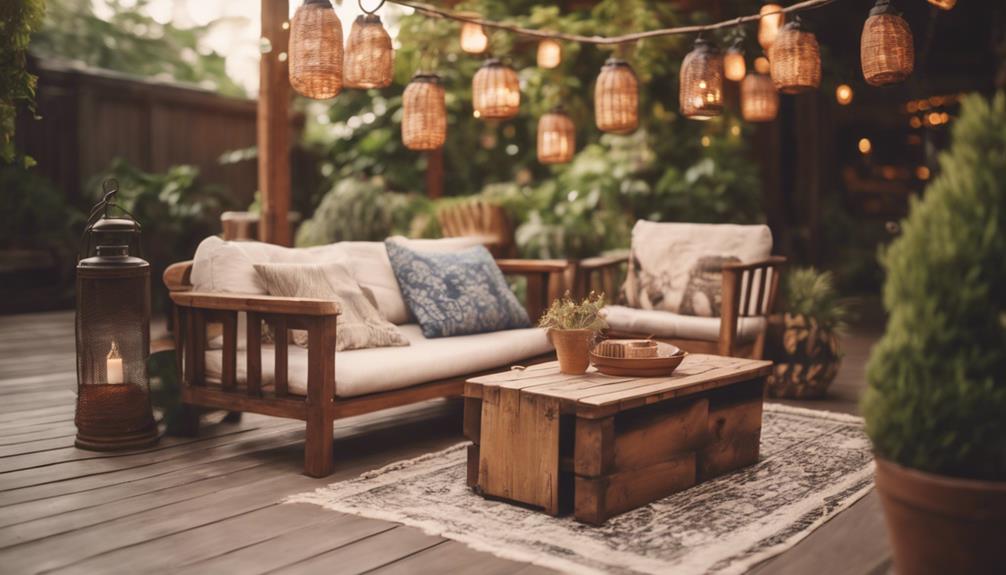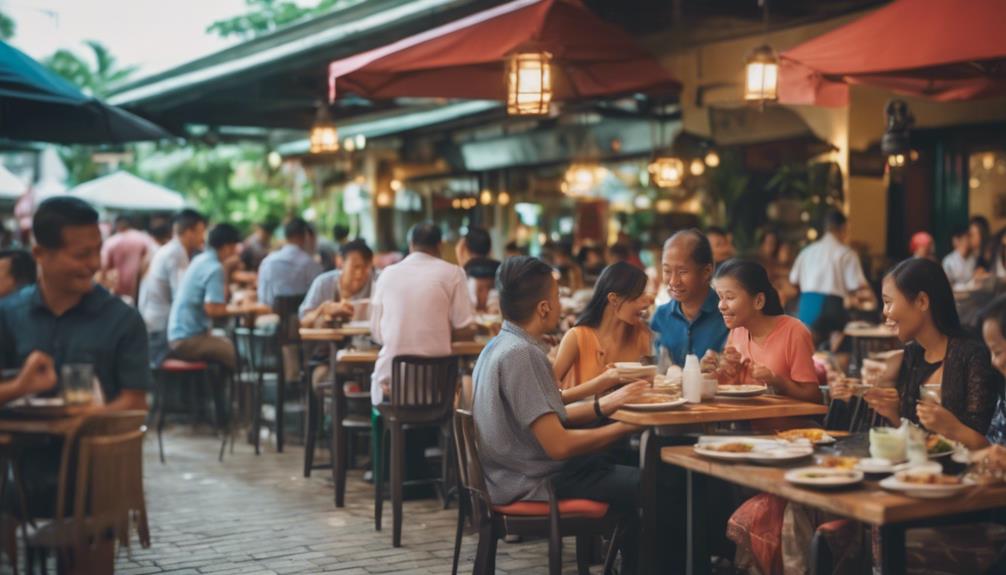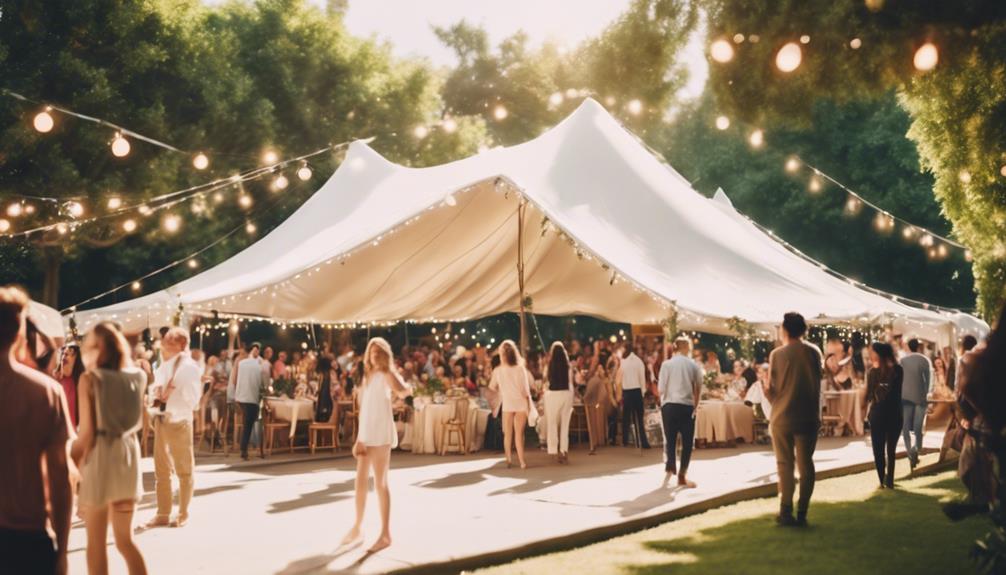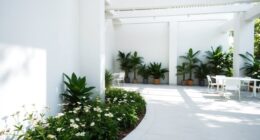You're looking to create the perfect alfresco space, and flooring is a major decision. You want durability and style, but with so many options, it can be overwhelming. Wood flooring adds a cozy touch, while concrete and aggregate choices offer sustainability and slip-resistance. Natural stone flooring is unbeatable for high-traffic areas, and tile and porcelain options provide durability and aesthetic appeal. There are also composite wood decking, rubber and vinyl flooring, and pea gravel and laminate choices to explore. Ready to explore the best outdoor flooring materials for your dream alfresco space?
Key Takeaways
- Wood flooring creates a warm and inviting alfresco area, offering a natural and cozy atmosphere with eco-friendly benefits.
- Natural stone flooring provides unbeatable durability for high-traffic areas, with unique aesthetic appeal and low maintenance.
- Composite wood decking is a low-maintenance, eco-friendly alternative to traditional wood decking, perfect for creating a stylish outdoor space.
- Porcelain tiles are durable, mold-resistant, and perfect for heavy appliances, making them an ideal option for alfresco areas.
- Rubber flooring provides excellent grip, is water-resistant, and easy to clean, making it a great option for high-traffic outdoor spaces.
Wood Flooring Options
In addition to creating a warm and inviting alfresco area, wood flooring options stand out as a top choice, offering a natural and cozy atmosphere that seamlessly blends with the outdoors.
You'll love how wood flooring brings a sense of warmth and comfort to your outdoor space, making it perfect for relaxing and socializing.
Plus, wood flooring is a durable option that can withstand the elements, ensuring your alfresco area remains beautiful for years to come.
As a natural material, wood flooring also offers an eco-friendly alternative for outdoor extensions, allowing you to extend your living space while minimizing your environmental footprint.
Moreover, high-quality wood floors can even increase your home's resale value, making them a smart investment for homeowners.
Concrete and Aggregate Choices
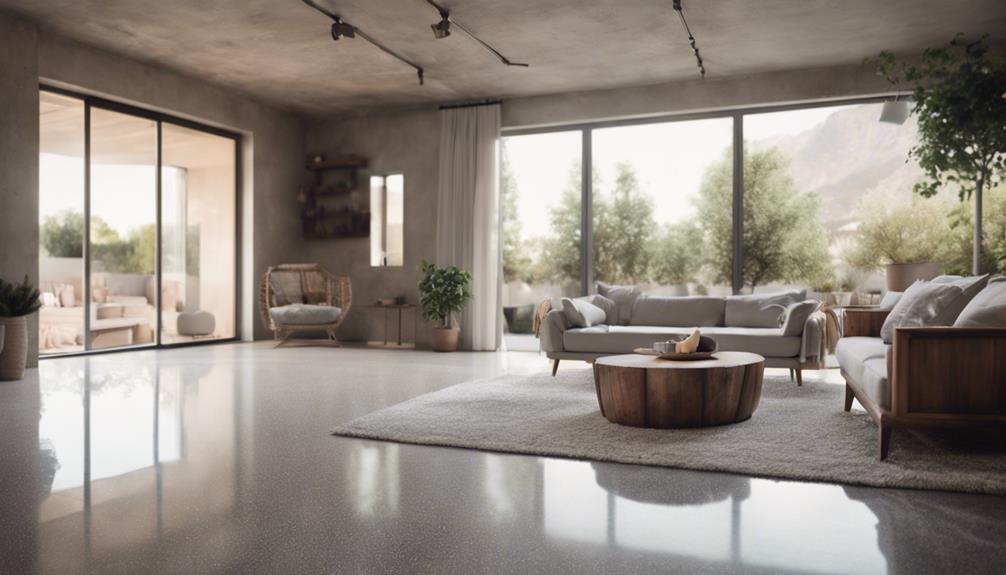
Now that you've considered wood flooring options, it's time to explore the world of concrete and aggregate choices for your alfresco space!
You'll want to weigh the pros and cons of polished concrete options, aggregate exposed finishes, and sealed aggregate systems to find the perfect fit for your outdoor oasis.
From durability to style, these choices will help you create a stunning and functional space that's uniquely yours.
Polished Concrete Options
You can choose from a variety of concrete and aggregate options to customize your polished concrete flooring, allowing you to achieve a unique look that complements your outdoor space. With polished concrete, you can create a sophisticated and modern alfresco area that's both durable and sustainable. Plus, it's low maintenance, requiring only weekly mopping to keep it clean and well-maintained.
Here are some key benefits of polished concrete flooring:
| Benefit | Description |
|---|---|
| Durability | Withstands heavy foot traffic and harsh outdoor conditions |
| Versatility | Can be polished to mimic natural stone or achieve a unique look |
| Sustainability | Eco-friendly and long-lasting, reducing the need for frequent replacements |
Polished concrete is an excellent choice for outdoor areas like patios, driveways, and pool surrounds. Its sleek and modern appearance adds a touch of elegance to your outdoor living space, enhancing the overall aesthetic. While it may crack over time, polished concrete remains a stylish and durable option for your alfresco flooring.
Aggregate Exposed Finishes
As you explore polished concrete options, consider incorporating aggregate exposed finishes into your alfresco flooring design. This choice offers a unique blend of durability, style, and low-maintenance benefits. With concrete and aggregate, you'll get a textured surface that's not only visually appealing but also provides excellent slip-resistance, making it perfect for outdoor spaces like patios, driveways, and pool areas.
Plus, these finishes are a breeze to maintain – just give them a weekly mop and they'll look like new! And, if you want to add a touch of sophistication, you can polish them to resemble natural stone, elevating the entire aesthetic of your outdoor space. Admittedly, concrete and aggregate may develop cracks over time, but with proper care, they'll remain a stunning and functional choice for years to come.
Sealed Aggregate Systems
When selecting a sealed aggregate system for your alfresco flooring, you'll find that concrete and aggregate choices offer a versatile and sustainable option that's both stylish and eco-friendly.
These sealed aggregate systems are perfect for creating a stunning outdoor space that's not only beautiful but also environmentally friendly.
One of the best things about sealed aggregate systems is that they're low maintenance. You'll only need to do weekly mopping to keep them looking fresh and clean.
Plus, they can be polished to give them a natural stone appearance, which can really elevate the aesthetic of your outdoor space.
While they're durable, it's worth noting that sealed aggregate systems can be prone to cracking over time. However, with proper maintenance, you can minimize this risk.
Ideal for patios, driveways, and pool areas, sealed aggregate systems provide a stylish and eco-friendly outdoor flooring solution that's perfect for your alfresco area.
Natural Stone Perfection
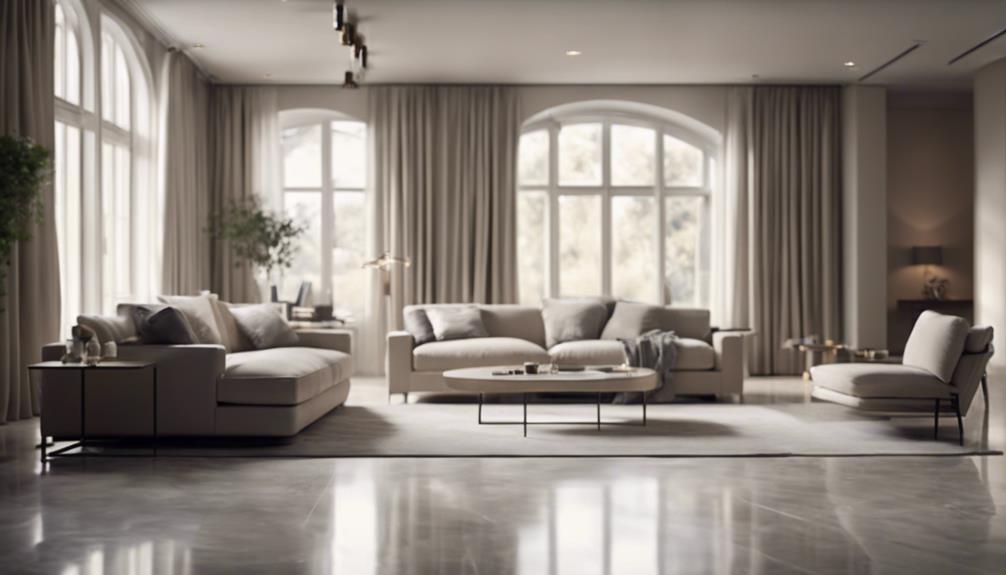
Natural stone flooring brings an unparalleled level of sophistication to your alfresco area, combining durability and style in perfect harmony. You can't go wrong with this timeless choice, which offers a unique blend of elegance and practicality.
Whether you're looking to create a luxurious outdoor atmosphere or simply want a flooring option that can withstand the elements, natural stone is the way to go.
Here are just a few reasons why natural stone stands out from the rest:
- Unbeatable durability: Natural stone can withstand heavy foot traffic and harsh weather conditions, making it perfect for high-traffic areas and outdoor use.
- Unique aesthetic appeal: Each piece of natural stone has its own distinct patterns and textures, adding visual interest to your alfresco space.
- Low maintenance: Natural stone flooring is easy to clean and maintain, saving you time and effort in the long run.
- Increased property value: Installing natural stone flooring can increase your home's value and make it more attractive to potential buyers.
Tile and Porcelain Selections
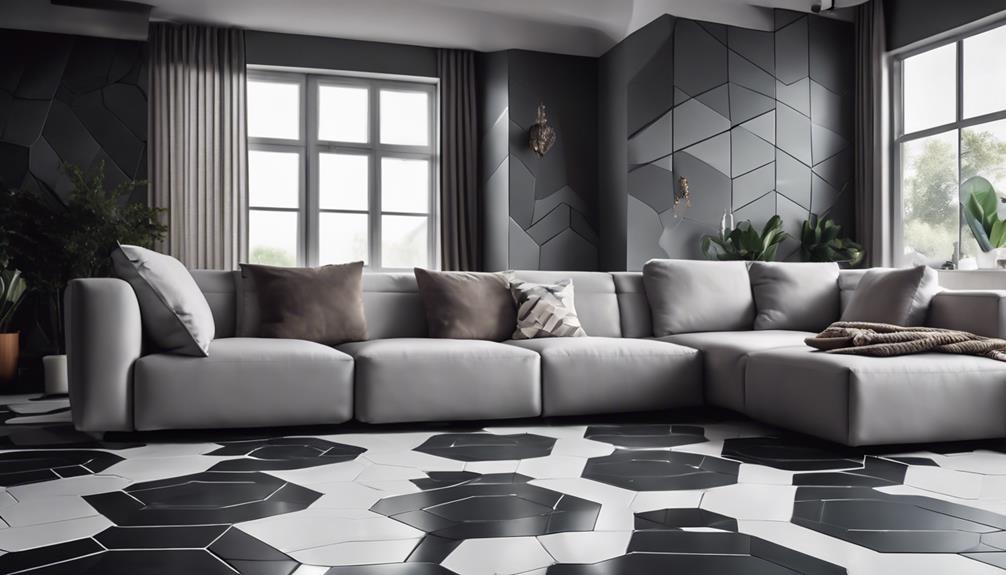
As you explore tile and porcelain options for your alfresco flooring, you'll discover a world of possibilities!
You'll get to choose from a range of ceramic tile benefits, porcelain paver options that mimic natural stone looks, and more.
Ceramic Tile Benefits
You'll find ceramic tiles are a popular choice for alfresco flooring due to their affordability and wide range of colors and styles. They're an excellent option for outdoor spaces, offering durability and resistance to moisture, making them perfect for areas exposed to the elements. Plus, they're easy to clean and maintain, ensuring your alfresco area remains looking its best.
Here are some benefits of choosing ceramic tiles for your alfresco flooring:
- Durability: Ceramic tiles can withstand the outdoor elements and heavy foot traffic.
- Moisture resistant: They're designed to handle exposure to water and humidity, reducing the risk of damage.
- Easy to clean: Ceramic tiles are a breeze to clean, and they don't require any special maintenance.
- Low maintenance: With proper installation, ceramic tiles can last for years to come with minimal upkeep.
However, keep in mind that ceramic tiles can be prone to cracking under heavy weight, so it's essential to follow proper installation and maintenance guidelines. With the right care, ceramic tiles can be a fantastic choice for your alfresco flooring needs.
Porcelain Paver Options
Selecting porcelain pavers for your alfresco flooring offers a versatile and stylish solution, combining durability with a wide range of aesthetic options.
When you choose porcelain pavers, you can rest assured they'll withstand the elements and heavy foot traffic, making them perfect for outdoor use. Plus, they're resistant to mold and require minimal maintenance, so you can spend more time enjoying your outdoor space.
With a vast array of style options, you can create a unique look that complements your home's design. However, keep in mind that cutting these pavers to shape can be a challenge due to their durability and hardness.
On the plus side, the cost of porcelain pavers is relatively affordable, ranging from $10 to $30 per square foot. This makes them an excellent choice for those seeking a stylish and practical alfresco flooring solution.
With porcelain pavers, you can create an outdoor oasis that's both beautiful and durable, perfect for relaxing and entertaining.
Natural Stone Looks
For a sophisticated outdoor flooring option that exudes luxury and refinement, consider natural stone-look tiles and porcelain selections, which expertly mimic the beauty of real stone while offering enhanced durability and low maintenance. You'll love the high-end look and feel of these materials, perfect for creating a modern alfresco space that's both stylish and practical.
Here are just a few benefits of choosing natural stone-look tiles and porcelain for your outdoor flooring:
- Durability: Porcelain tiles are clay-fired at high temperatures, making them incredibly resistant to wear and tear.
- Easy maintenance: These materials are mold-resistant and easy to clean, ensuring your outdoor space stays looking its best.
- Style versatility: Natural stone-look tiles come in a range of colors and designs, so you can choose the perfect fit for your outdoor aesthetic.
- Low maintenance: Say goodbye to tedious upkeep and hello to more free time with these low-maintenance flooring options.
Composite Wood Decking Ideas
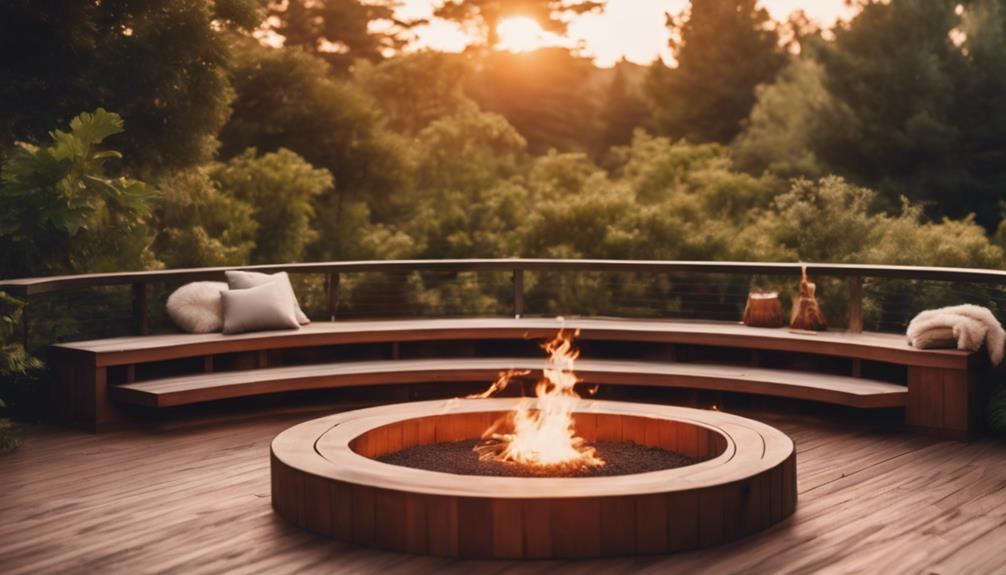
Composite wood decking ideas abound, offering a versatile palette of colors and textures to transform your outdoor space into a stunning alfresco oasis. You'll love the durability and eco-friendliness of composite wood decking, making it an excellent choice for outdoor flooring.
Unlike natural wood, composite decking is low maintenance, weather-resistant, and won't splinter or rot. Plus, it's available in a range of colors, giving you design flexibility to create a unique look for your outdoor space.
While it may be more expensive than real wood, composite decking is a sustainable option that will last for years to come. You'll appreciate the modern look and feel of composite wood decking, and the fact that it's easy to clean and maintain.
Whether you're looking to create a cozy seating area or a spacious entertaining space, composite wood decking is an excellent choice. So why not consider composite wood decking for your alfresco flooring? It's a durable, eco-friendly, and stylish option that will elevate your outdoor space to the next level.
Rubber and Vinyl Flooring Options
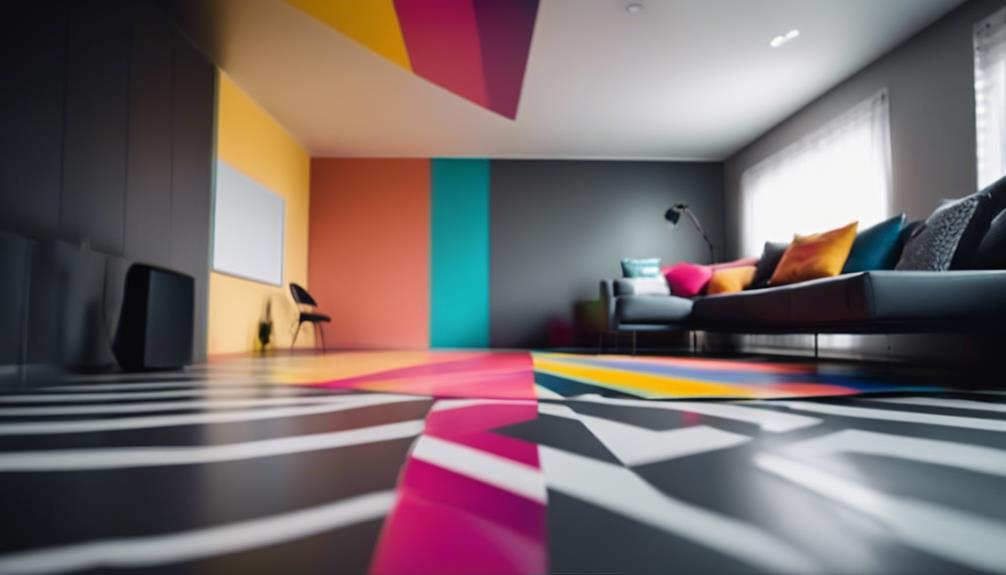
You can opt for rubber and vinyl flooring options that combine durability, style, and low maintenance, perfect for your alfresco area. These flooring options are designed to withstand the harsh outdoor conditions while adding a touch of elegance to your outdoor space.
Here are some benefits of rubber and vinyl flooring options:
- Durable and Slip-Resistant: Rubber flooring is a great option, costing around $10 per square foot, and provides excellent grip, even when wet.
- Water-Resistant and Scratch-Resistant: Vinyl flooring is a great alternative, imitating natural hardwood, and is perfect for outdoor spaces.
- Low Maintenance and Easy to Clean: Both rubber and vinyl flooring options are easy to maintain and clean, making them ideal for alfresco areas.
- Aesthetic Appeal: Rubber tiles and vinyl tiles come in a wide range of colors and designs, allowing you to enhance the aesthetic appeal of your outdoor space.
With rubber and vinyl flooring options, you can create an alfresco area that's not only durable but also visually appealing. Plus, they're heat-resistant, making them perfect for high-traffic outdoor spaces.
Pea Gravel and Laminate Choices
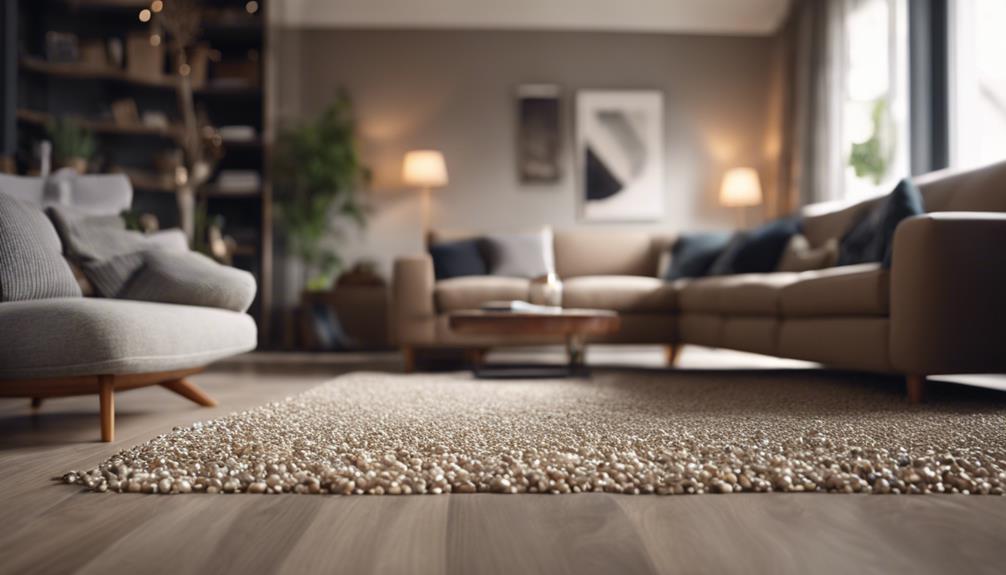
Exploring pea gravel and laminate flooring options can open up a world of possibilities for your alfresco area, offering a unique blend of functionality and style.
You'll be thrilled to know that pea gravel is a cost-effective outdoor flooring option, ranging from $1 to $4 per square foot. Plus, it's comfortable to walk on and aids in drainage, making it a practical choice for outdoor spaces.
On the other hand, laminate flooring offers a durable and stylish solution for alfresco areas, with a moderate price point. It's easy to install and maintain, providing a versatile option for your outdoor flooring needs.
Both pea gravel and laminate flooring can enhance the aesthetics of your outdoor areas while offering durability. As you weigh your options, consider what matters most to you: budget, style, or functionality.
With pea gravel and laminate flooring, you can't go wrong. These outdoor flooring options are sure to elevate your alfresco space, providing a perfect blend of form and function.
Best Outdoor Flooring Materials
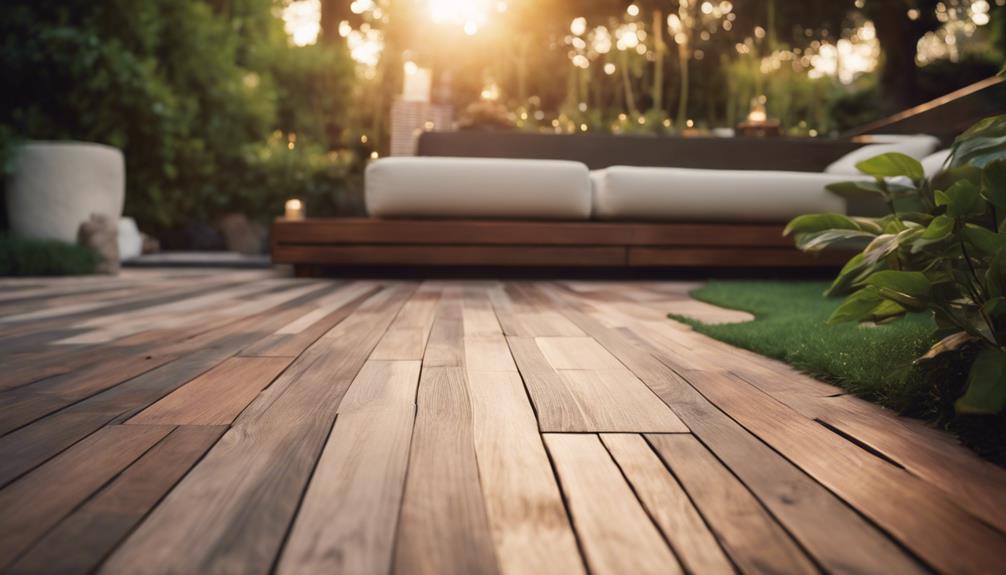
When selecting the best outdoor flooring material for your alfresco area, it's essential to take into account factors like durability, maintenance, and cost, as different options offer varying benefits and drawbacks.
You'll want to think about what works best for your lifestyle, budget, and personal style.
Here are some popular outdoor flooring materials to consider:
- Wood: A natural, warm option that can add coziness to your outdoor space, but may require more maintenance.
- Stone: A durable, low-maintenance option that comes in various styles, from modern to rustic.
- Tiles: Porcelain tiles, in particular, are durable, mold-resistant, and perfect for heavy appliances.
- Composite decking: A low-maintenance, eco-friendly alternative to traditional wood decking.
Other options like brick pavers, artificial grass, and rubber flooring are also worth exploring. Remember to weigh the pros and cons of each material before making your final decision.
With so many options available, you're sure to find the perfect flooring for your alfresco oasis!
Frequently Asked Questions
Which Type of Flooring Is the Most Durable?
You're wondering which type of flooring is the most durable, right? Well, let's explore!
Porcelain tiles, composite wood decking, natural stone pavers, concrete pavers, and rubber tiles are all durable options. But, if I'd to pick one, I'd say concrete pavers take the cake.
They can withstand heavy foot traffic and harsh weather conditions, making them an extremely reliable choice for your outdoor space.
What Is the Best Material for Outdoor Kitchen Floors?
'Break a leg' with your outdoor kitchen floor decision!
You're probably wondering what's the best material for the job. Well, it really depends on your priorities.
If you want something durable and easy to clean, porcelain flooring might be your top pick.
But if you're looking for comfort and drainage, gravel could be the way to go.
Consider your needs, and the perfect floor will fall into place!
What Is the Best Flooring for an Outdoor Porch?
So, you're looking for the best flooring for your outdoor porch! You've got a few awesome options to choose from.
If you want something durable and stylish, consider natural stone pavers or porcelain tiles. They're perfect for withstanding the elements and adding some serious style to your porch.
If you're looking for something a bit more low-maintenance, composite decking or rubber tiles might be the way to go.
Whatever you choose, make sure it's something that fits your style and budget!
What Is the Best Flooring for Longevity?
You're looking for the best flooring that'll stand the test of time, right? Well, you've got several fantastic options!
Porcelain tiles, concrete pavers, composite wood decking, natural stone pavers, and rubber flooring are all top contenders for longevity. Each one is known for its durability and resistance to wear and tear, harsh weather, and heavy foot traffic.
You can't go wrong with any of these choices, so pick the one that fits your style and budget!
Conclusion
You've got your dream alfresco space, and now it's time to seal the deal with the perfect flooring!
You've explored the world of wood, concrete, natural stone, tiles, and more – and trust us, it's been a wild ride!
But the real victory is finding the perfect blend of durability and style that mirrors your unique vibe.
So, take a deep breath, pat yourself on the back, and get ready to flaunt your new outdoor oasis – it's time to soak up the sun and make some unforgettable memories!
